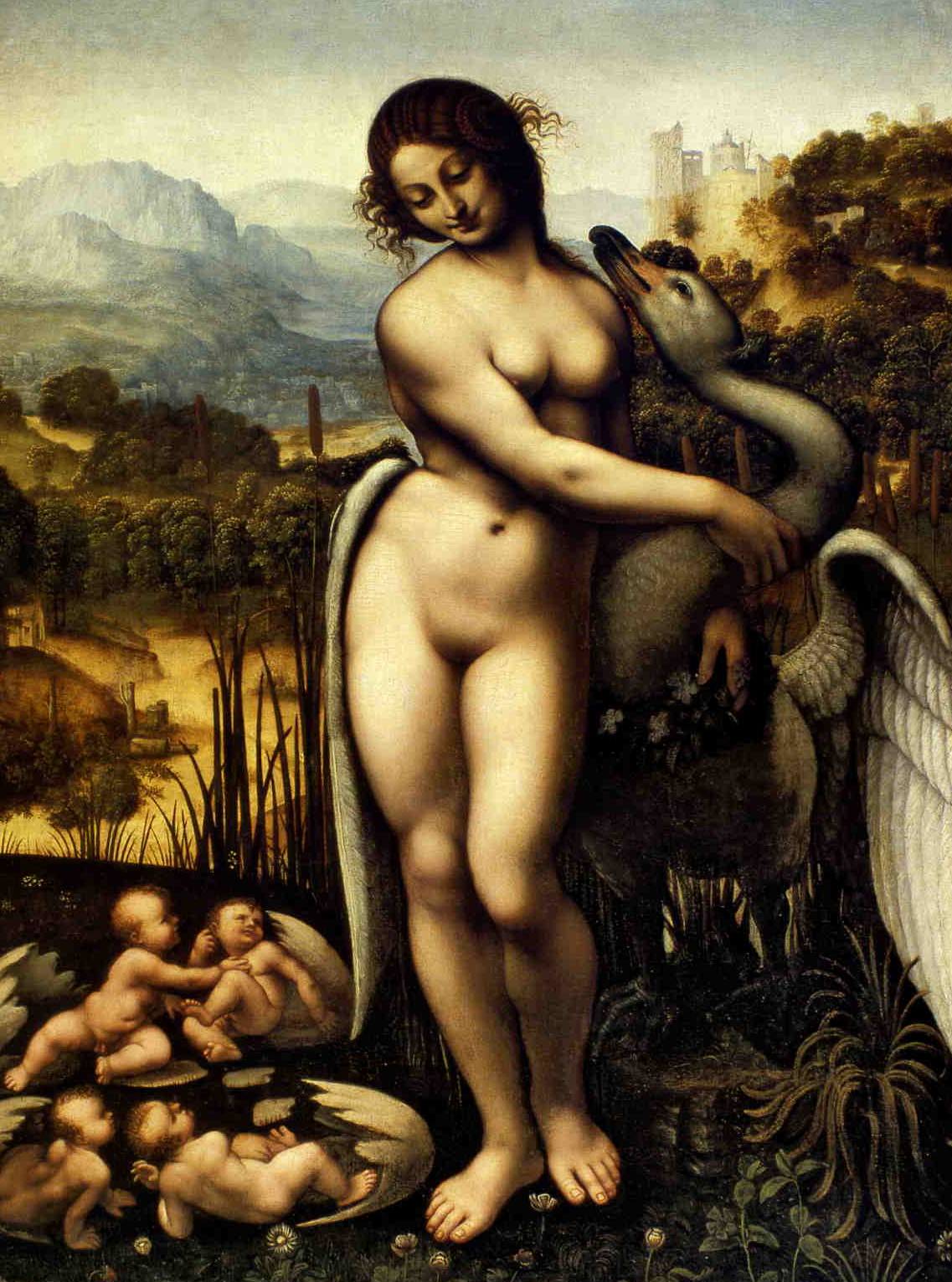St John the Baptist.
One of Leonardo da Vinci's final paintings.
Leonardo's painting of St John the Baptist is one of his final works. It portrays St John as an effeminate figure, the ambiguity of the face, which could be male or female, is in stark contrast to the more muscular depiction of the Saint that we have become accustomed to. His long curly hair and enigmatic smile are known Leonardo traits and are present in such works as The Mona Lisa and Salvator Mundi. St John emerges from a dark background his skin and hair ringlets are lit in what is a fine example of Leonard's sfumato.
It has been suggested that the model for St John could be Leonardo’s pupil Giacomo Salai who joined Leonardo’s St John holds a cross in his left hand and, in a gesture like the cartoon of The Virgin and Child with St Anne and St John, his right-hand points towards heaven. This may signify that salvation is gained through prayer and the sacrament of baptism.
St John was a preacher and cousin of Jesus Christ; Jesus was among the many recipients of John’s baptism ritual. John peached about God’s last Judgement, he was active in and around the river Jorden baptising his followers in the Jewish and Christian traditions.workshop at the age of ten. There is intense speculation that the relationship between Salai and his master could have been sexual. However, although it probable that Leonardo was at least bisexual, his sexual preferences remain unresolved. Salai remained as a friend and pupil until Leonardo’s death in 1519.
St John the Baptist with the
attributes of Bacchus.
This is by a follower, or the workshop of Leonardo da Vinci.
Originally this was an obvious painting of St John the Baptist. However, an unknown seventeenth century painter has changed some elements within the picture. John’s staff which featured a cross at the top has been transformed into the thyrsus staff carried by Bacchus. The addition of a leopard skin and a crown of vine leaves completes the change from saint into the pagan god of wine and debauchery. This John the Baptist with the attributes of Bacchus painting is clearly based on Leonardo da Vinci’s sketch of 1510. Although Leonardo’s drawing has degraded over the years it lacks the later additions of the seventeenth century.
- Home
- Leonardo da Vinci
- St John






















